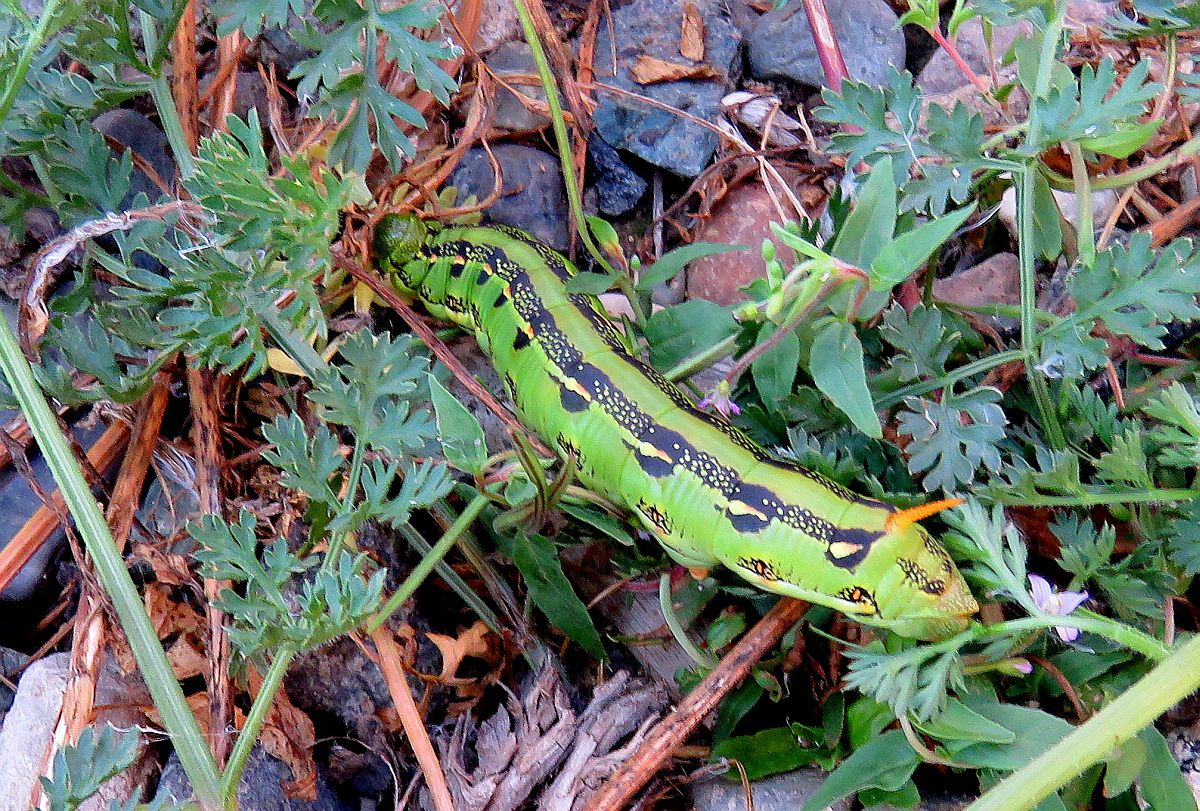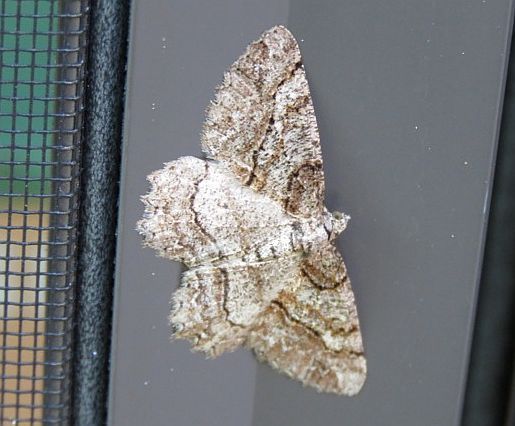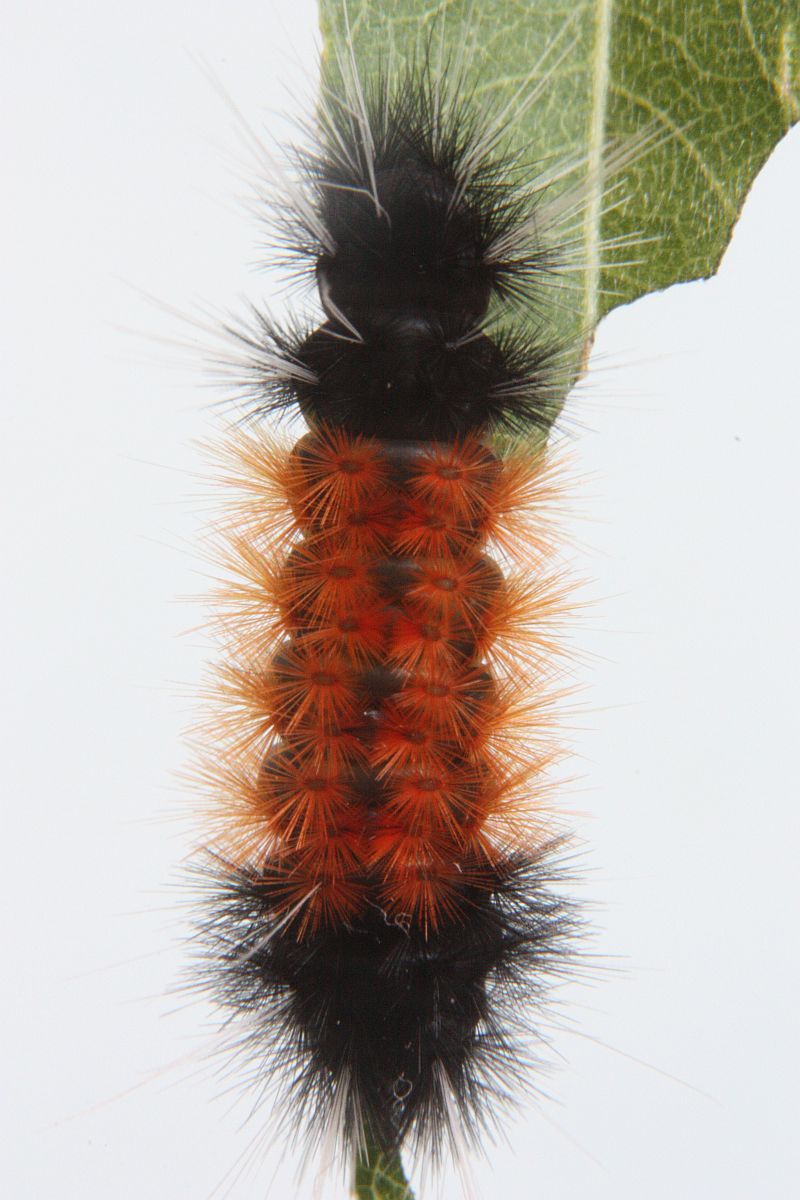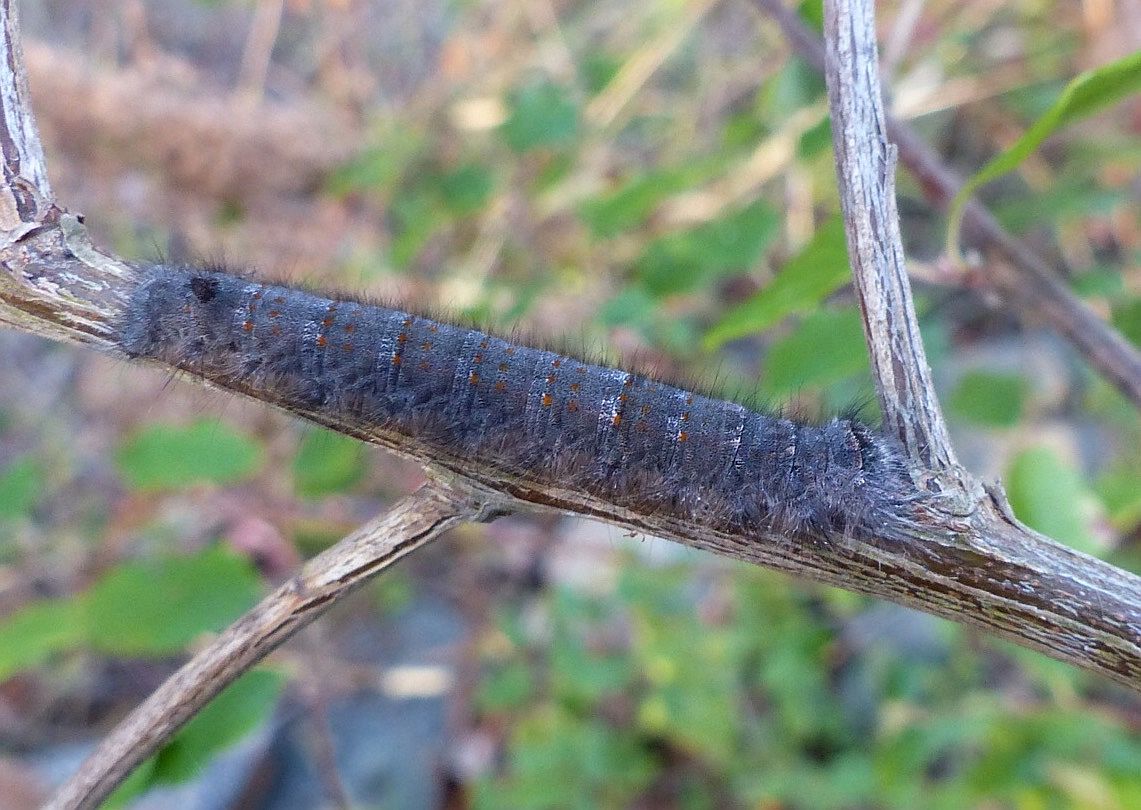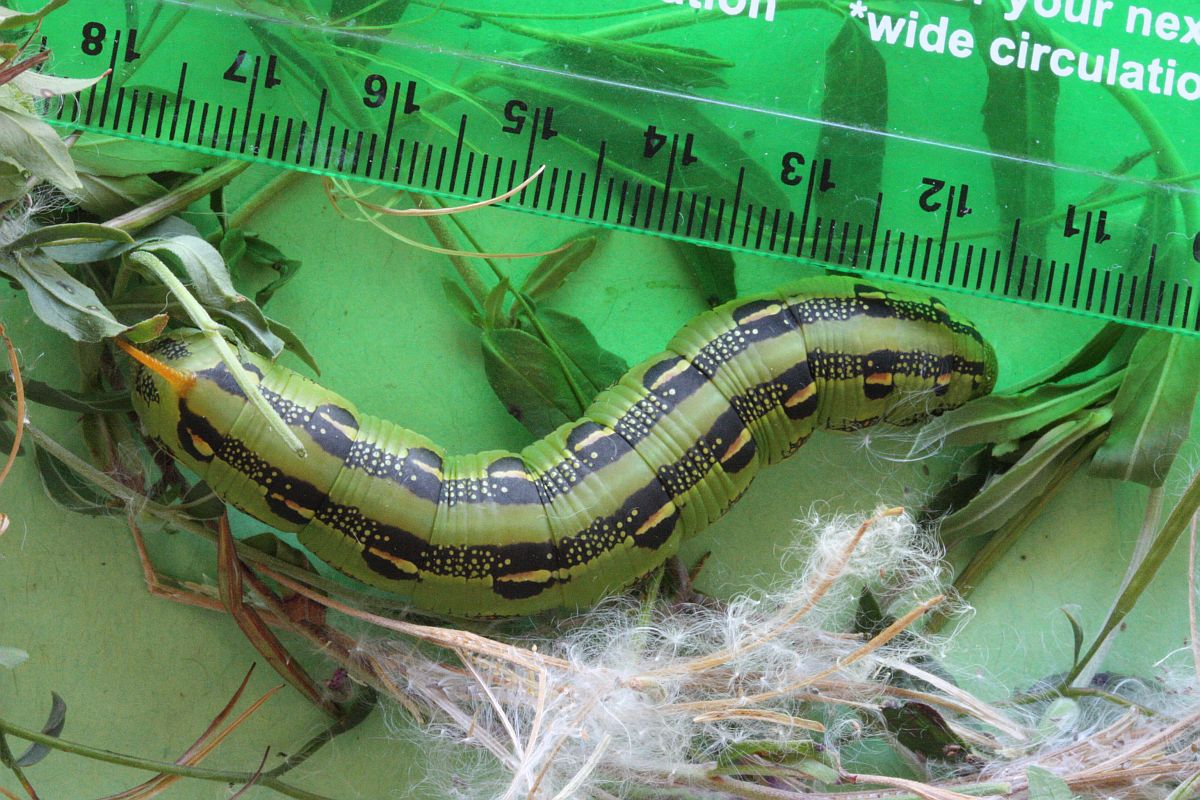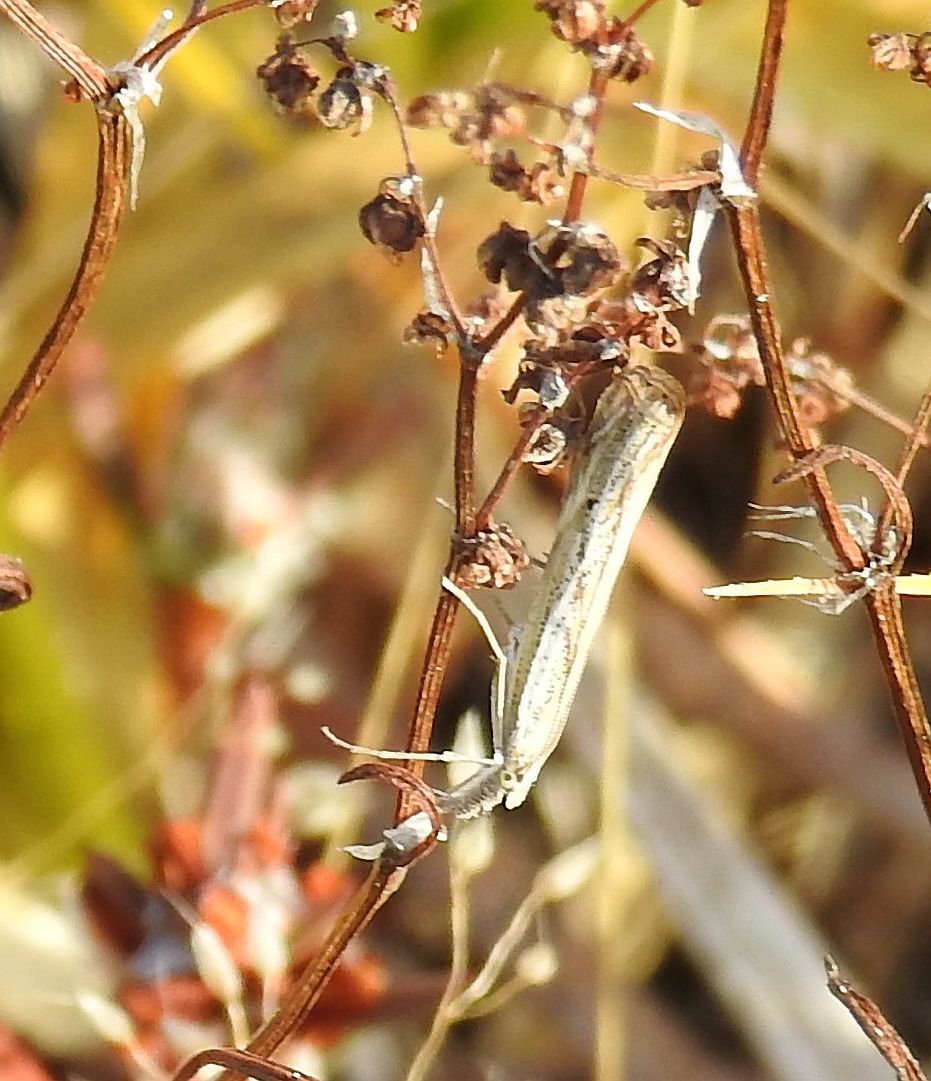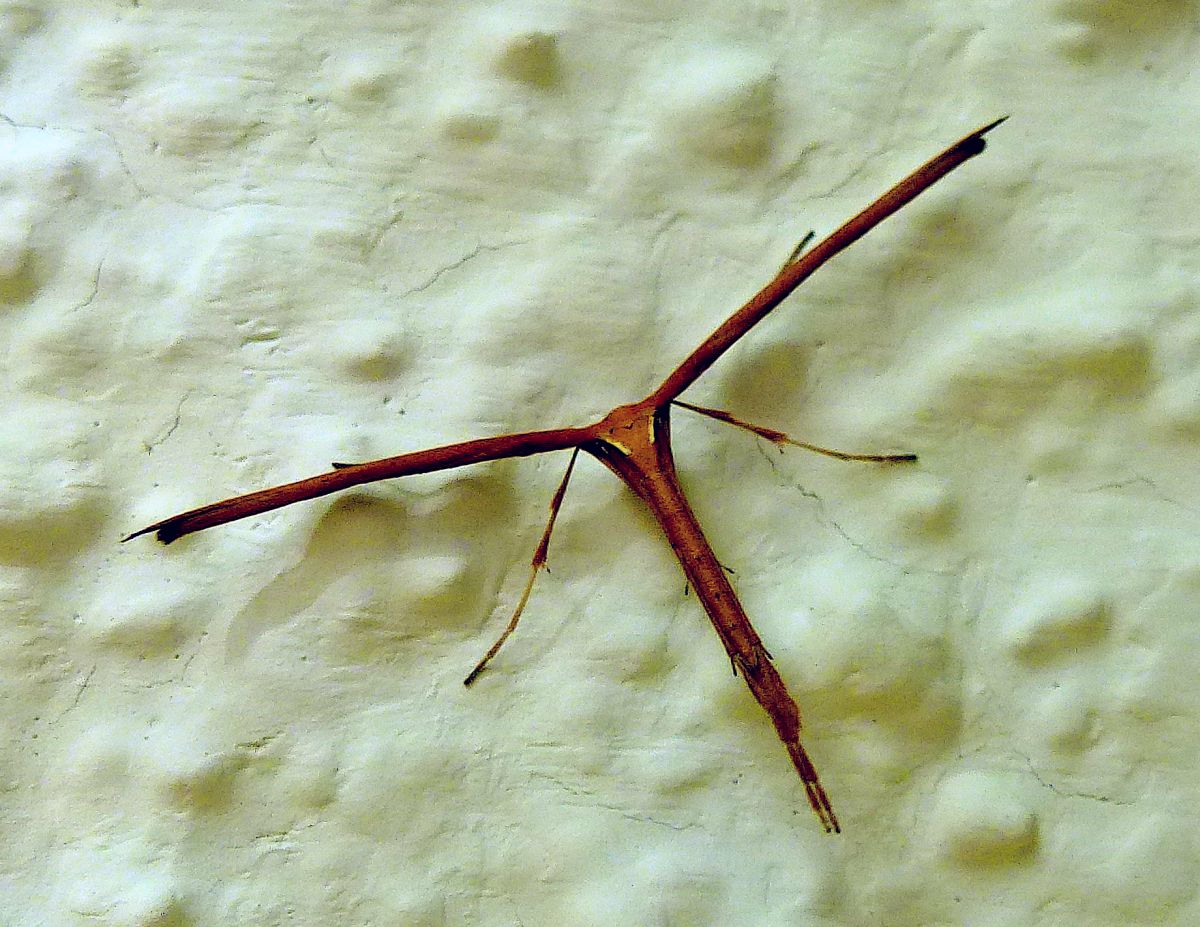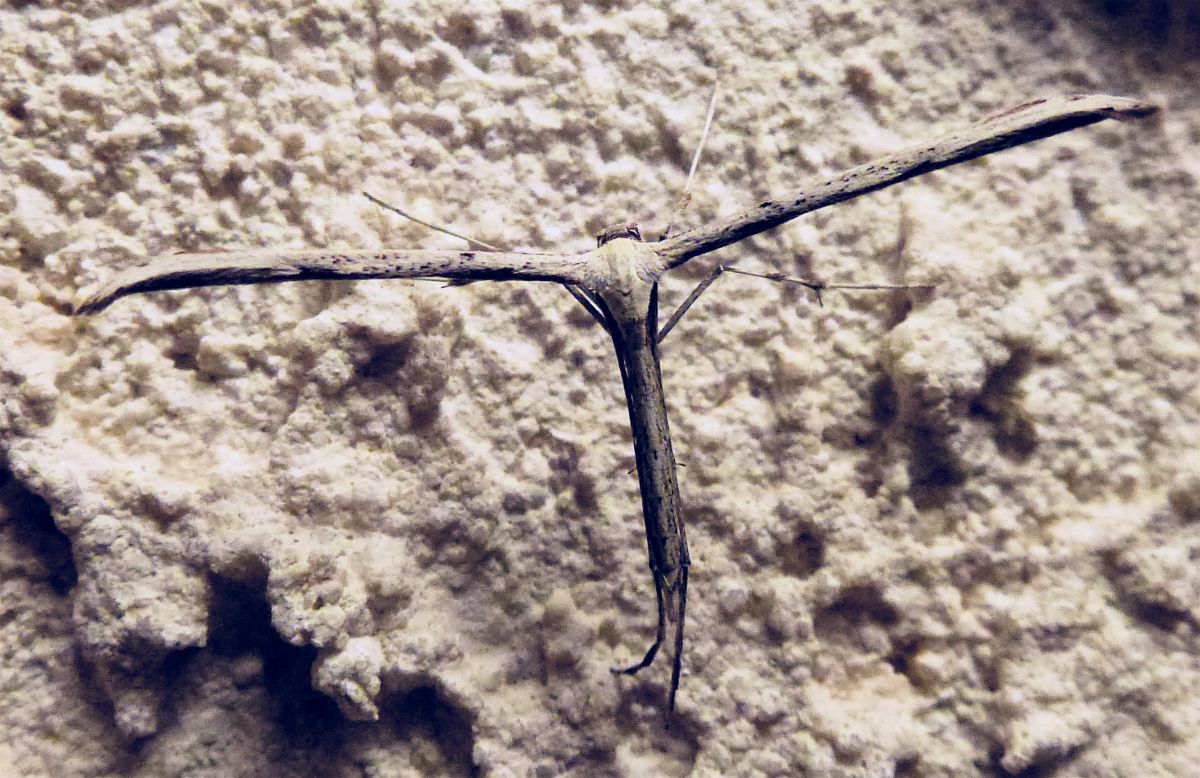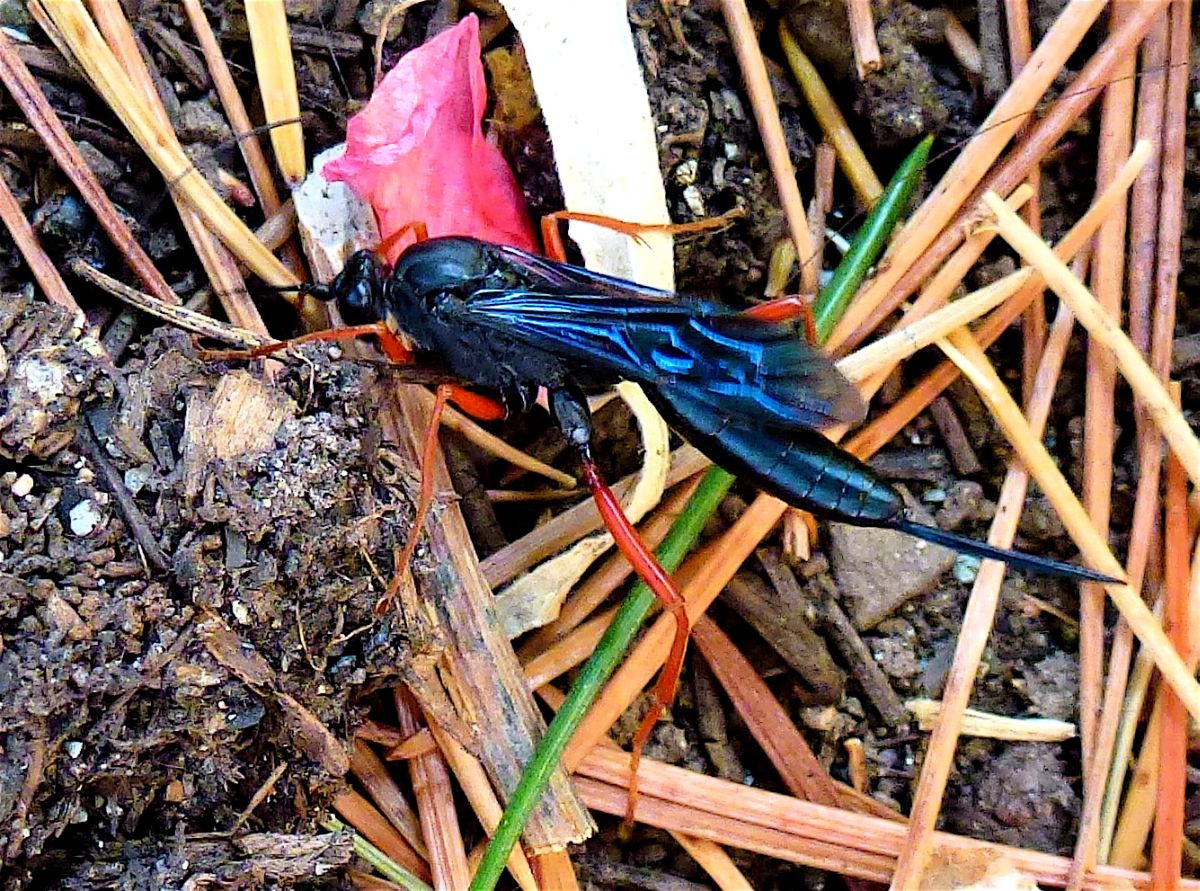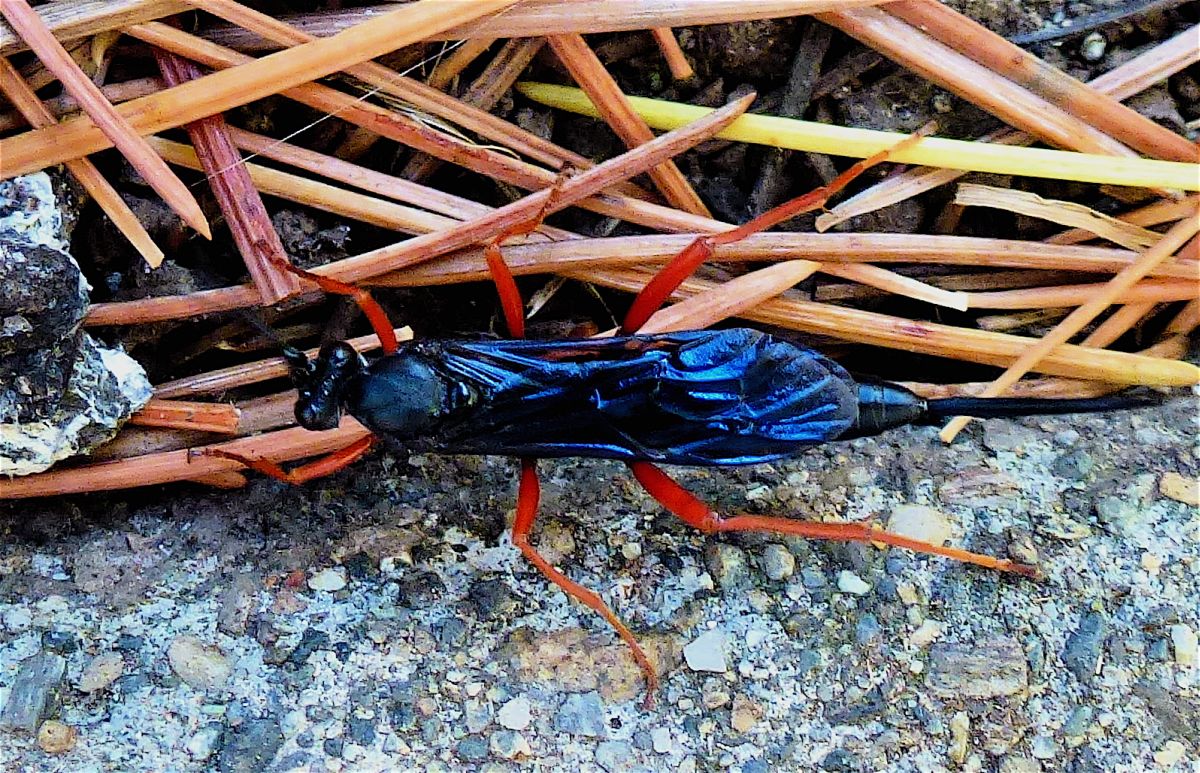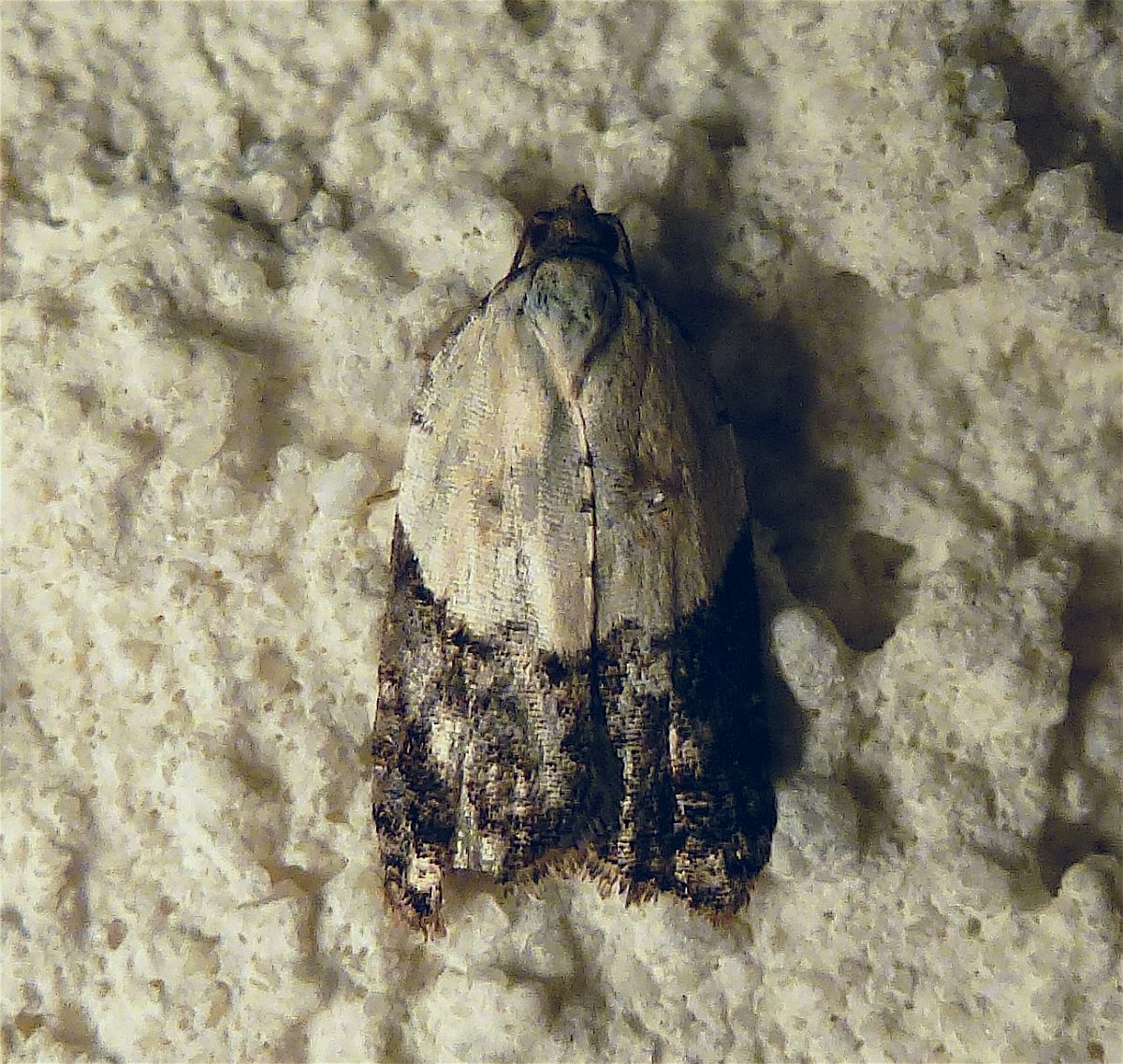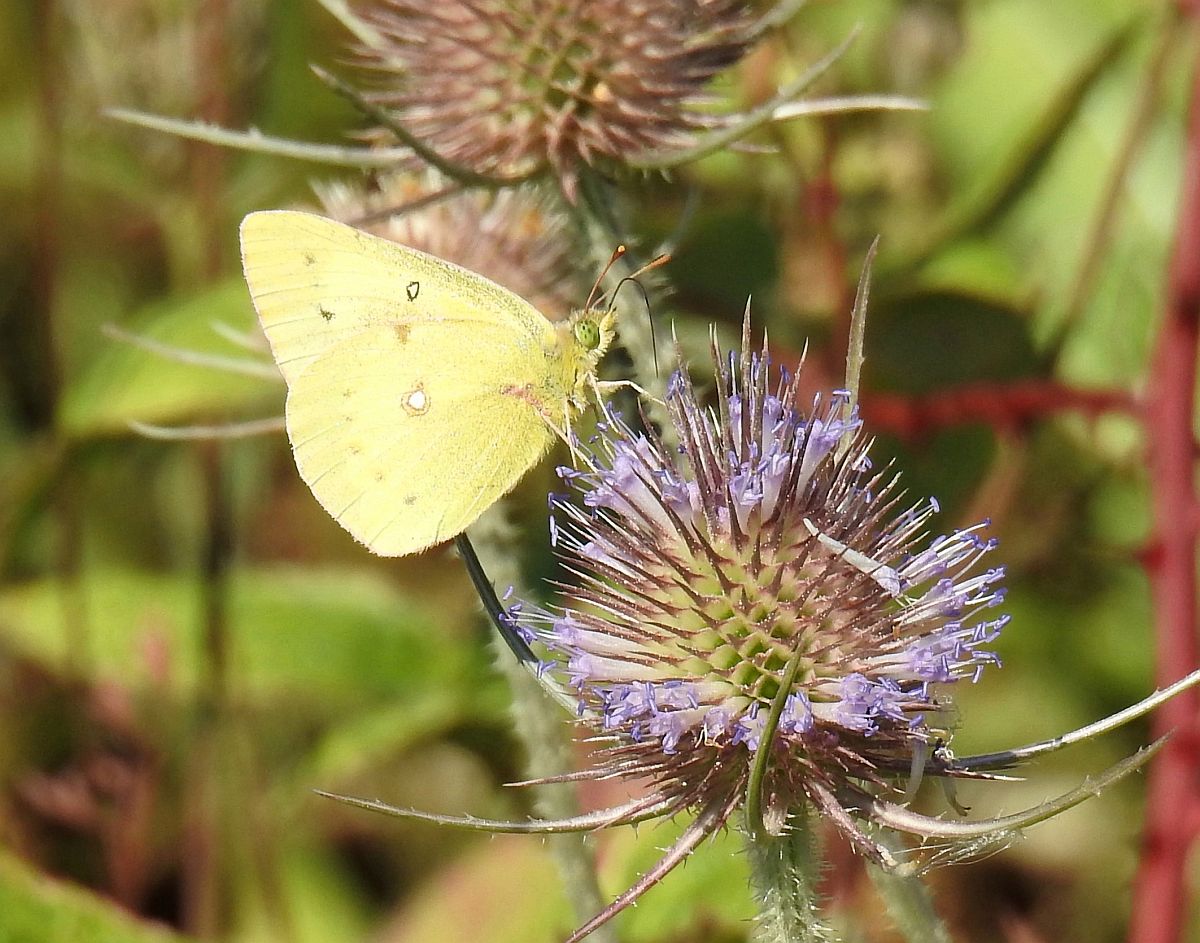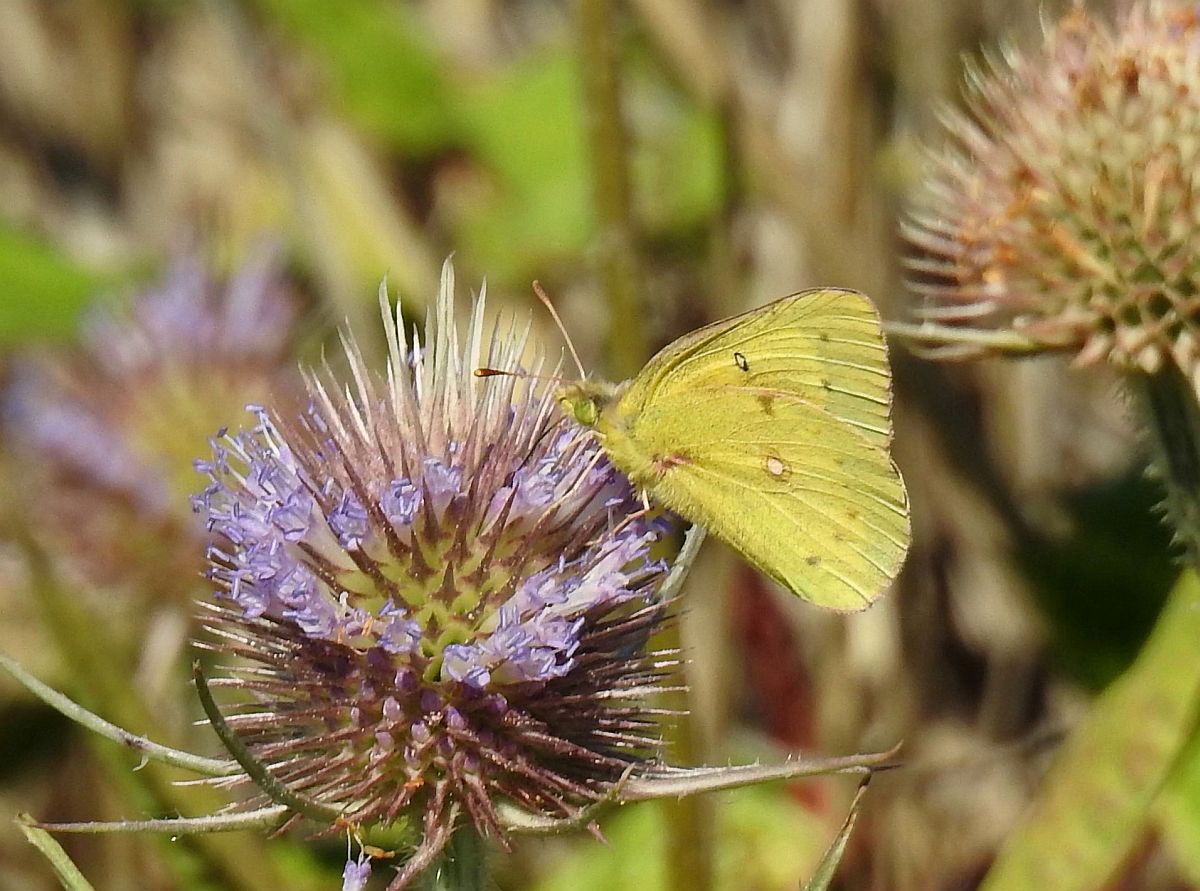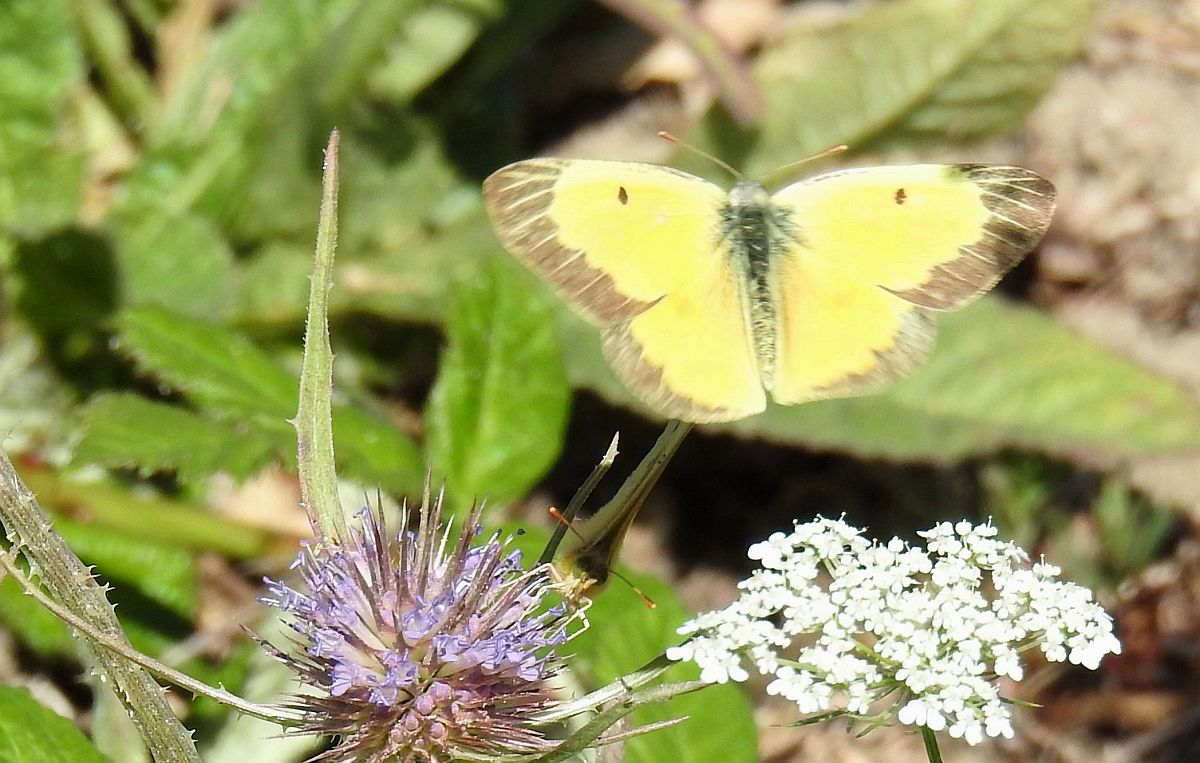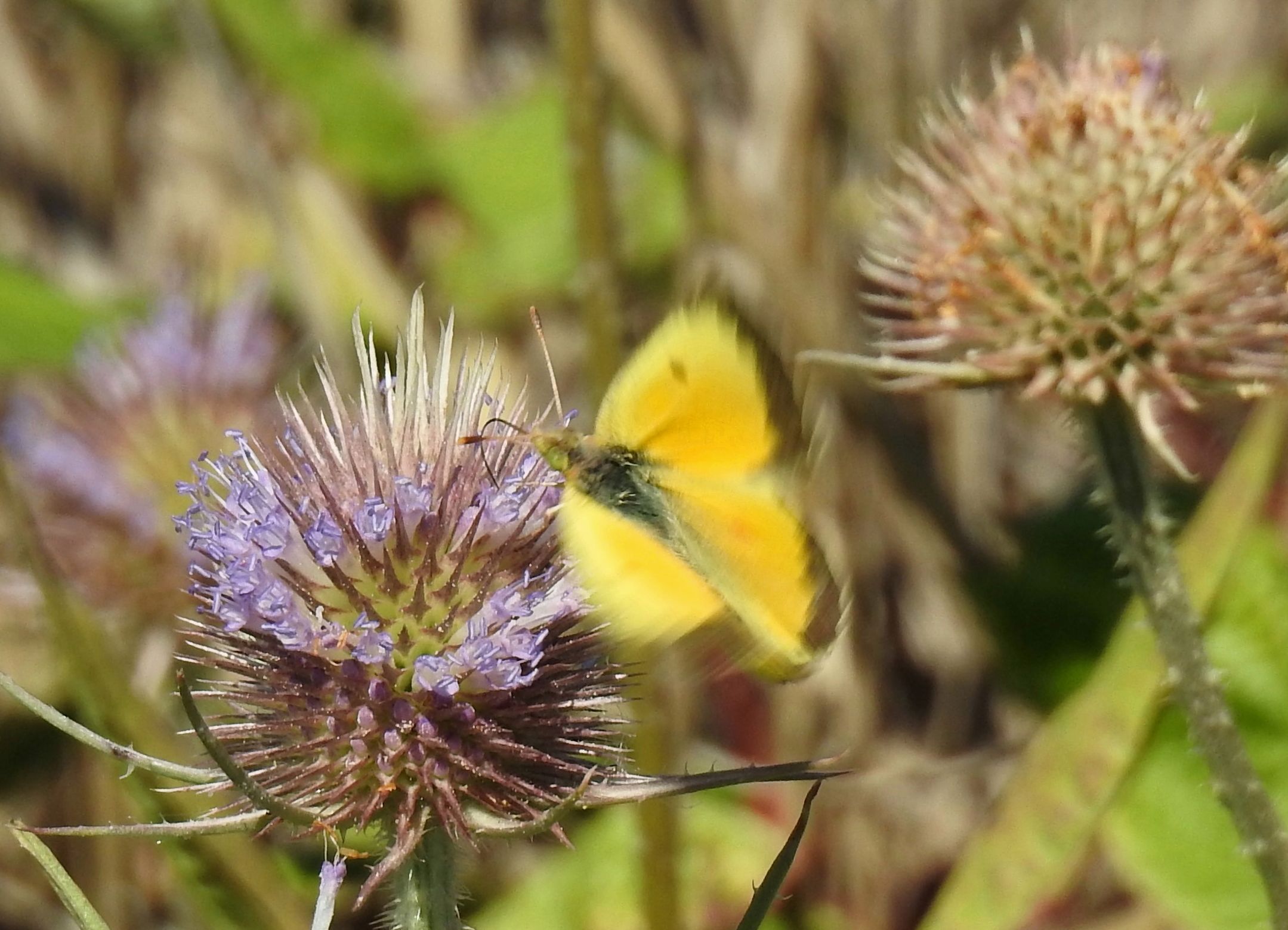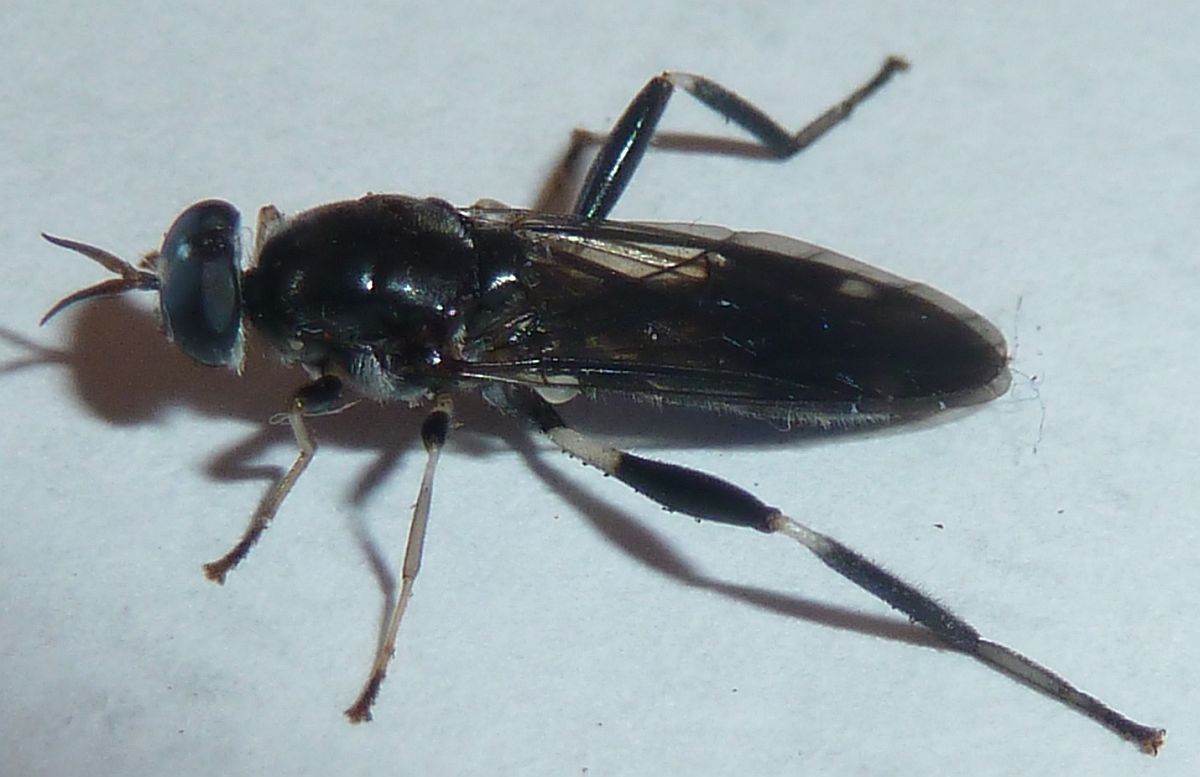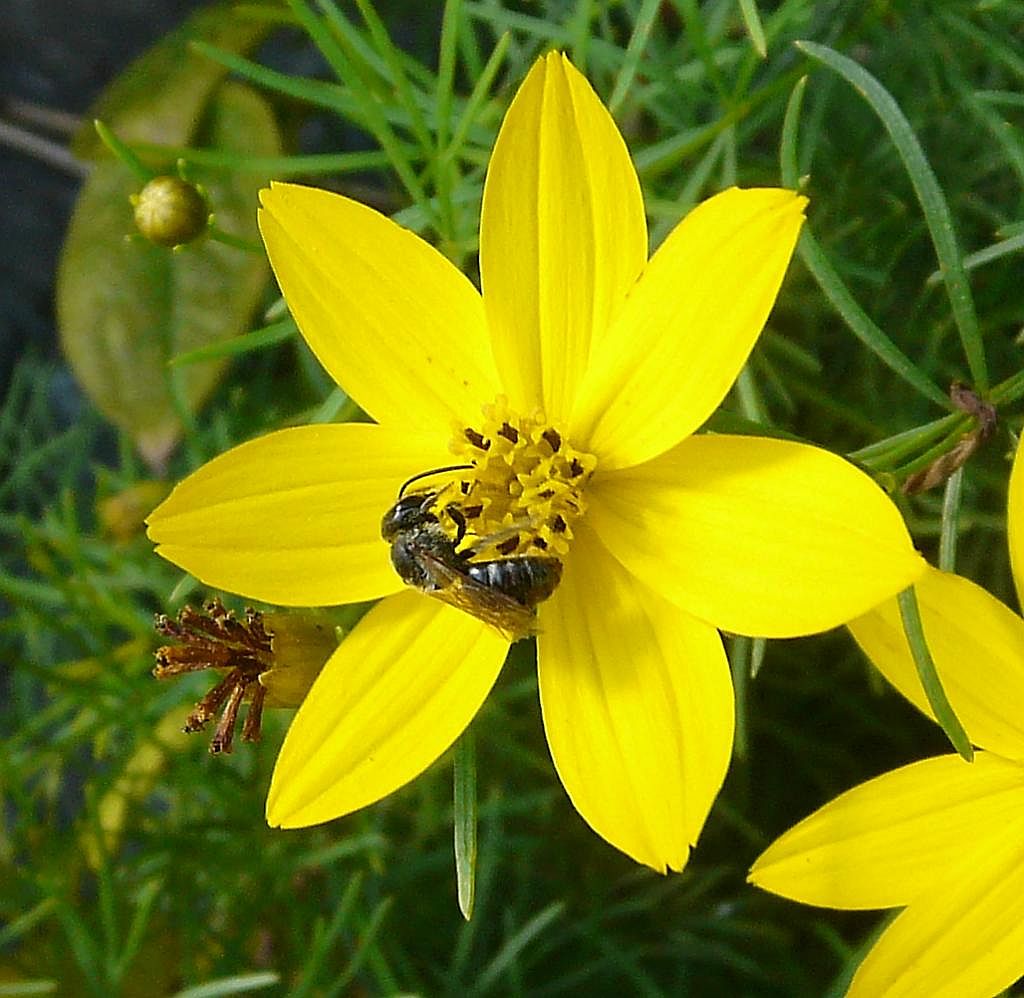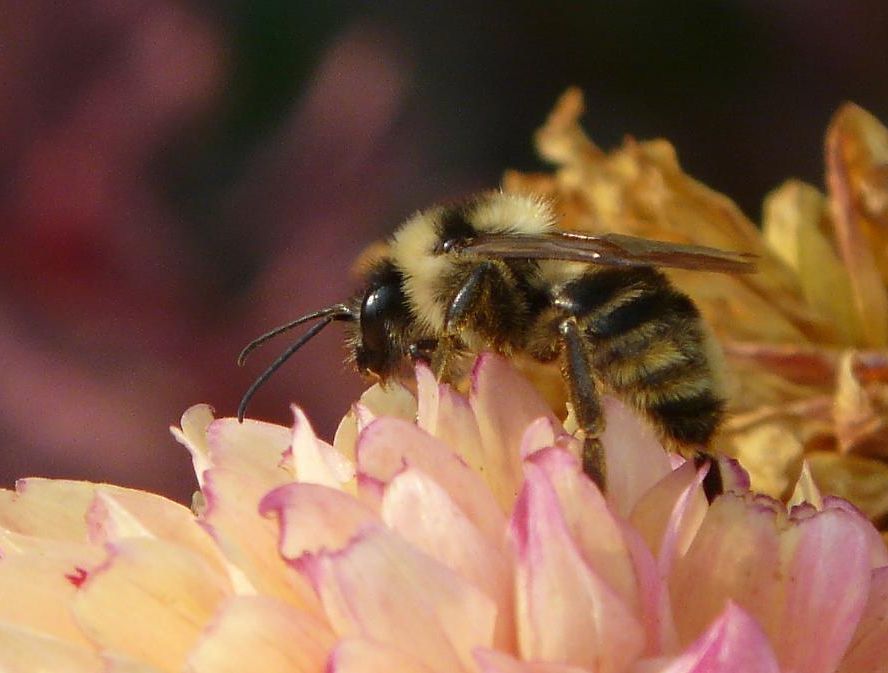2017 September 4
Gordon Hart sends some photographs of butterflies seen on the VNHS Butterfly Walk to McIntyre Reservoir yesterday.
Jeremy Tatum writes: I heard several unconventional names that people were calling some of the flowers that the butterflies were nectaring on. The sulphur and the lady are nectaring on Teasel, and the coppers on Scentless Mayweed.

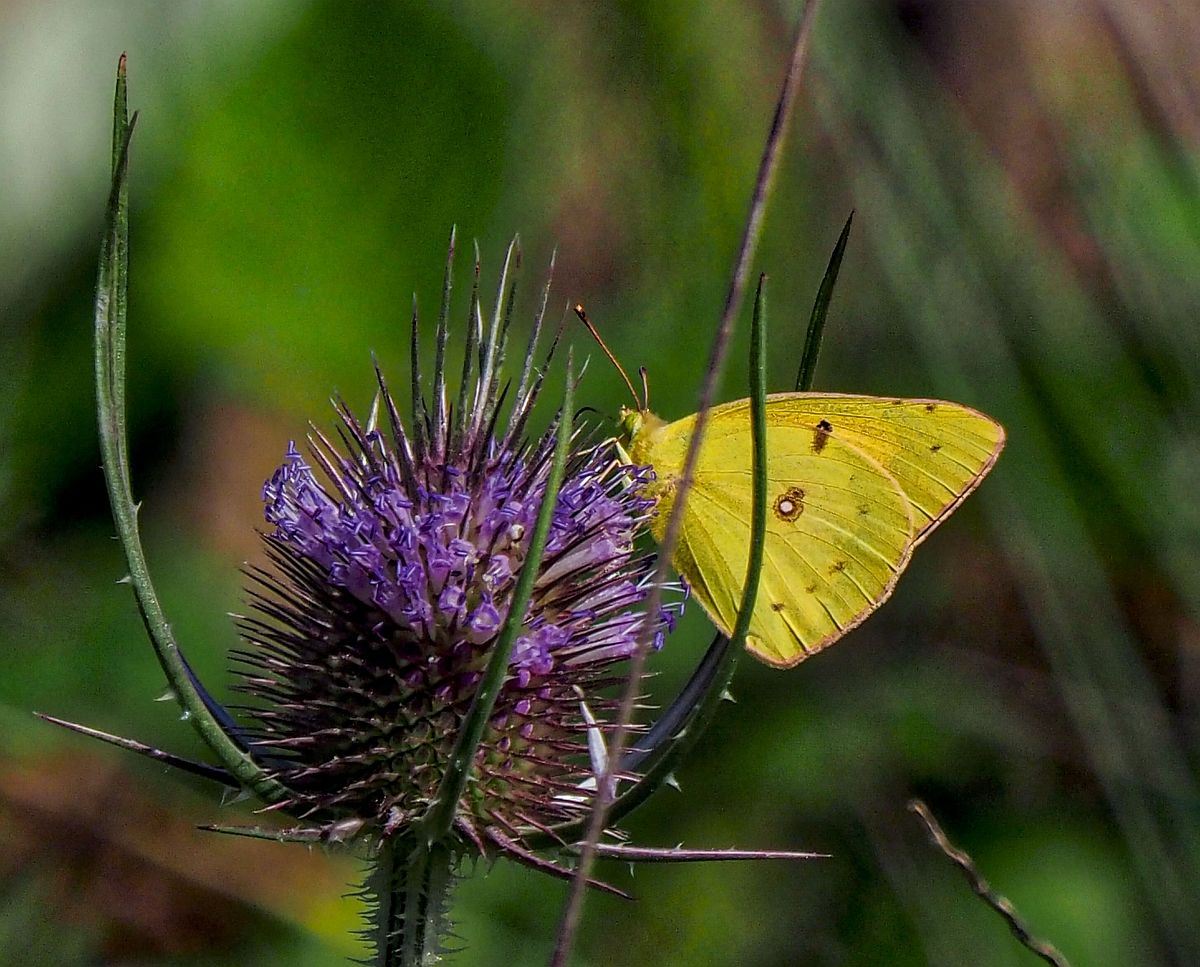
Male Orange Sulphur Colias eurytheme (Lep.: Pieridae) Gordon Hart

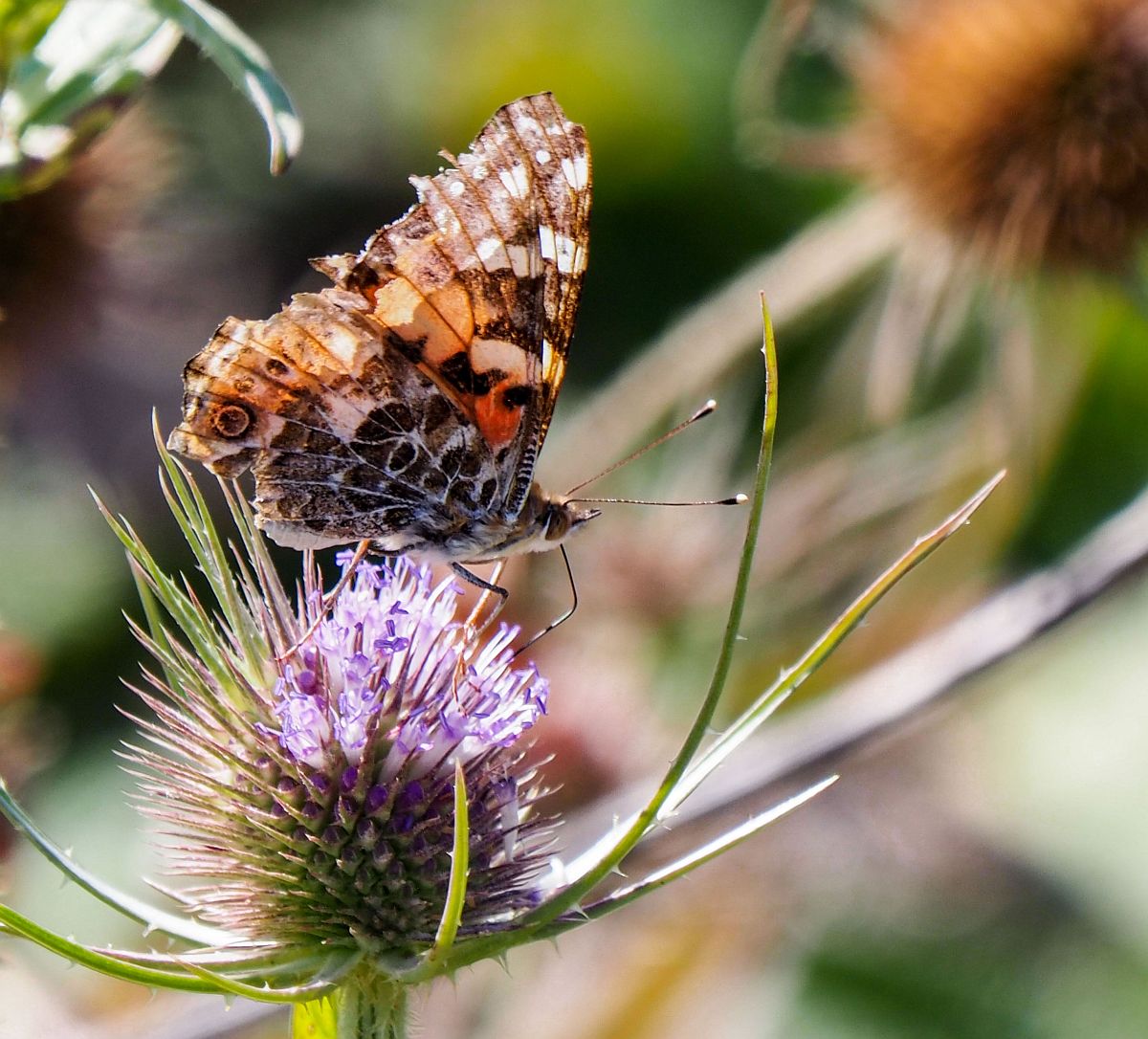
Painted Lady Vanessa cardui (Lep.: Nymphalidae) Gordon Hart

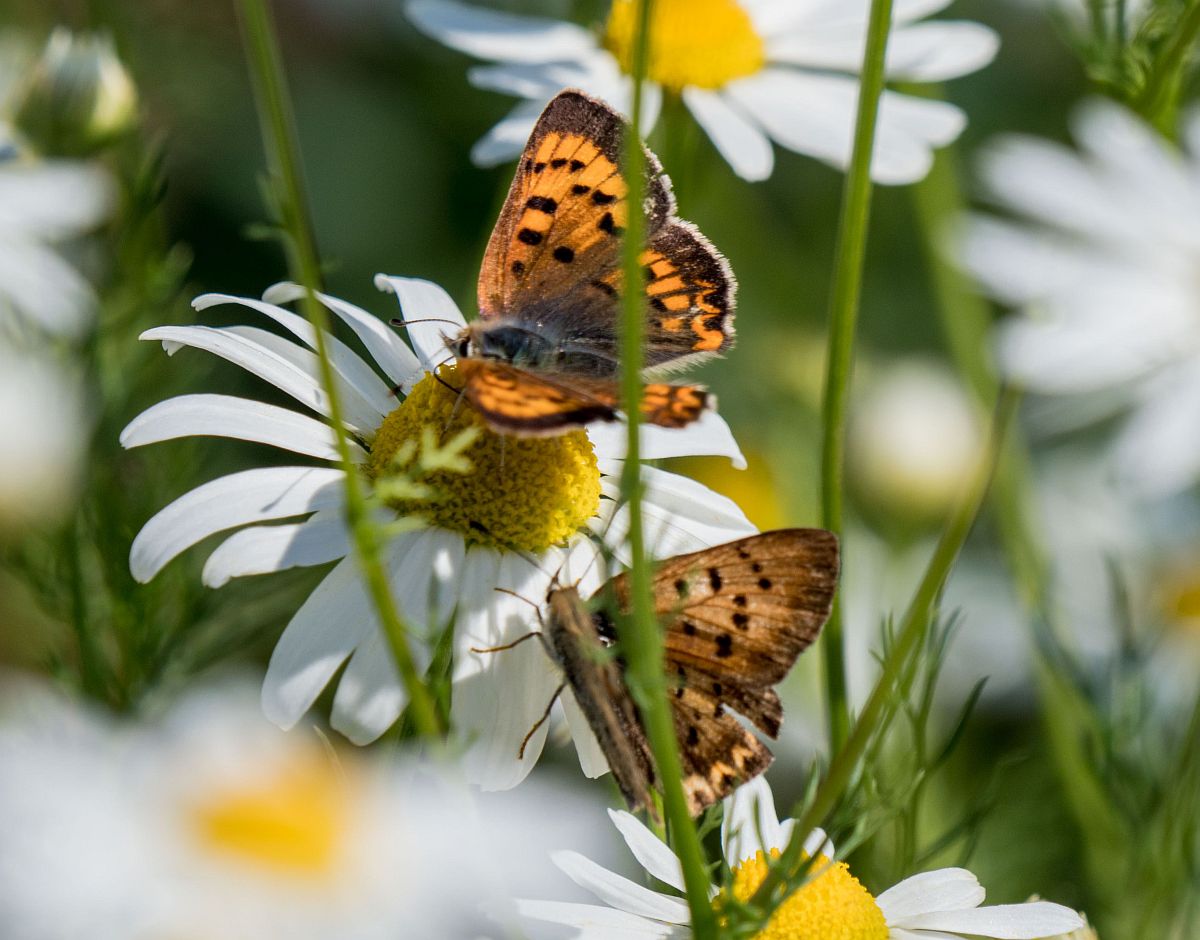
Purplish Coppers Lycaena helloides (Lep.: Lycaenidae) Gordon Hart
Female above. Male below

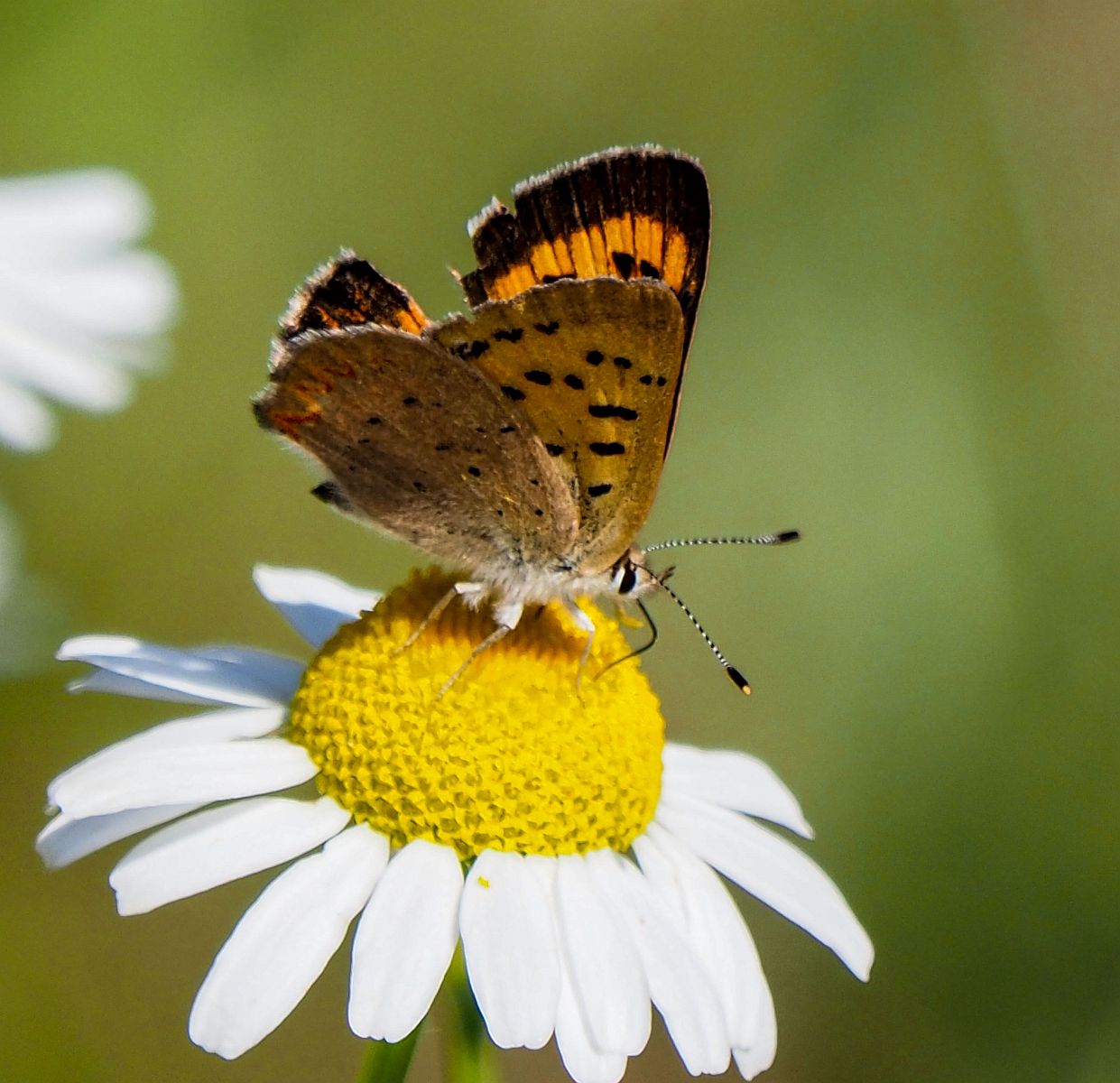
Female Purplish Copper Lycaena helloides (Lep.: Lycaenidae)
Libby Avis sends a photograph of a young geometrid caterpillar from her plum tree in Port Alberni. We don’t know what it is – it’ll be interesting to find out.

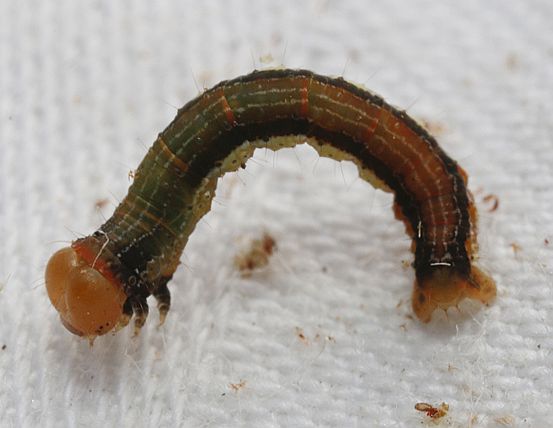
Unknown young geometrid caterpillar (Lep.: Geometridae) Libby Avis
Mike McGrenere writes: Barb and I stopped at the entrance to Pedder Bay today to pick blackberries and observed a Common Ringlet in the grass near the Pedder Bay marina sign. [Jeremy Tatum writes: Until the taxonomy settles down, I am calling all members of the Tullia complex on this site Large Heath C. tullia.]
Jeremy Tatum writes: This evening at 6:00 there was a Red Admiral on the Mount Tolmie reservoir, and, flying around the rocky summit and the Jeffery Pine were 2 Painted Ladies. Also flying around the summit and the pine were huge, extended dense clouds of millions (literally) of flying ants.

